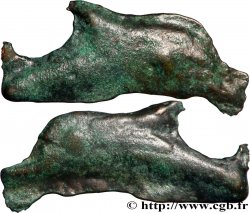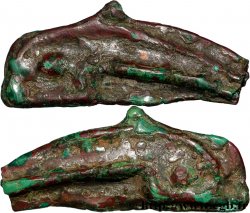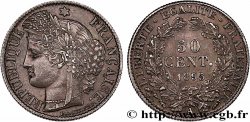MONNAIES 49 (2011)
Startpreis : 75.00 €
Schätzung : 120.00 €
Erzielter Preis : 135.00 €
Anzahl der Gebote : 5
Höchstgebot : 566.00 €
Startpreis : 75.00 €
Schätzung : 120.00 €
Erzielter Preis : 135.00 €
Anzahl der Gebote : 5
Höchstgebot : 566.00 €
Type : Dauphin
Datum: c. 500-400 AC.
Name der Münzstätte / Stadt : Sarmatia, Olbia
Metall : Bronze
Durchmesser : 25 mm
Gewicht : 1,13 g.
Seltenheitsgrad : R1
Kommentare zum Erhaltungszustand:
Exemplaire effilé, légèrement bombé. Jolie patine vert foncé
N° im Nachschlagewerk :
Pedigree :
Cet exemplaire provient du stock de Richelieu Numismatique
Vorderseite
Titulatur der Vorderseite ANÉPIGRAPHE.
Beschreibung Vorderseite Dauphin à droite avec le nez, l’œil, la nageoire caudale.
Rückseite
Kommentare
Dimensions (longueur 25 mm ; largeur 10 mm). Signe pré-monétaire coulé. Ce dauphin est un témoignage à la frontière entre Numismatique et Archéologie. Considéré comme pré-monétaire, ce type d’objet a pu être utilisé par des populations celtes au contact du monde grec à un moment où la monnaie ne s’est pas encore imposée. Les rédacteurs du SNG. de la collection Stancomb de la Mer Noire et de sa région attribuent ces signes pré ou para-monétaires à Olbia où elles ont été trouvées régionalement. Huit exemplaires sont publiés (WSC. 334 à 341 avec des poids compris entre 0,62 g et 2,02 g).
Dimensions (length 25 mm; width 10 mm). Cast pre-monetary sign. This dolphin is a testimony at the border between Numismatics and Archaeology. Considered pre-monetary, this type of object could have been used by Celtic populations in contact with the Greek world at a time when coin had not yet become established. The editors of the SNG. of the Stancomb collection of the Black Sea and its region attribute these pre- or para-monetary signs to Olbia where they were found regionally. Eight examples are published (WSC. 334 to 341 with weights between 0.62 g and 2.02 g)
Dimensions (length 25 mm; width 10 mm). Cast pre-monetary sign. This dolphin is a testimony at the border between Numismatics and Archaeology. Considered pre-monetary, this type of object could have been used by Celtic populations in contact with the Greek world at a time when coin had not yet become established. The editors of the SNG. of the Stancomb collection of the Black Sea and its region attribute these pre- or para-monetary signs to Olbia where they were found regionally. Eight examples are published (WSC. 334 to 341 with weights between 0.62 g and 2.02 g)








 Berichten über einen Fehler
Berichten über einen Fehler Die Seite drucken
Die Seite drucken Teilen meiner Auswahl
Teilen meiner Auswahl Stellen Sie eine Frage
Stellen Sie eine Frage Einlieferung/Verkauf
Einlieferung/Verkauf
 Details
Details















